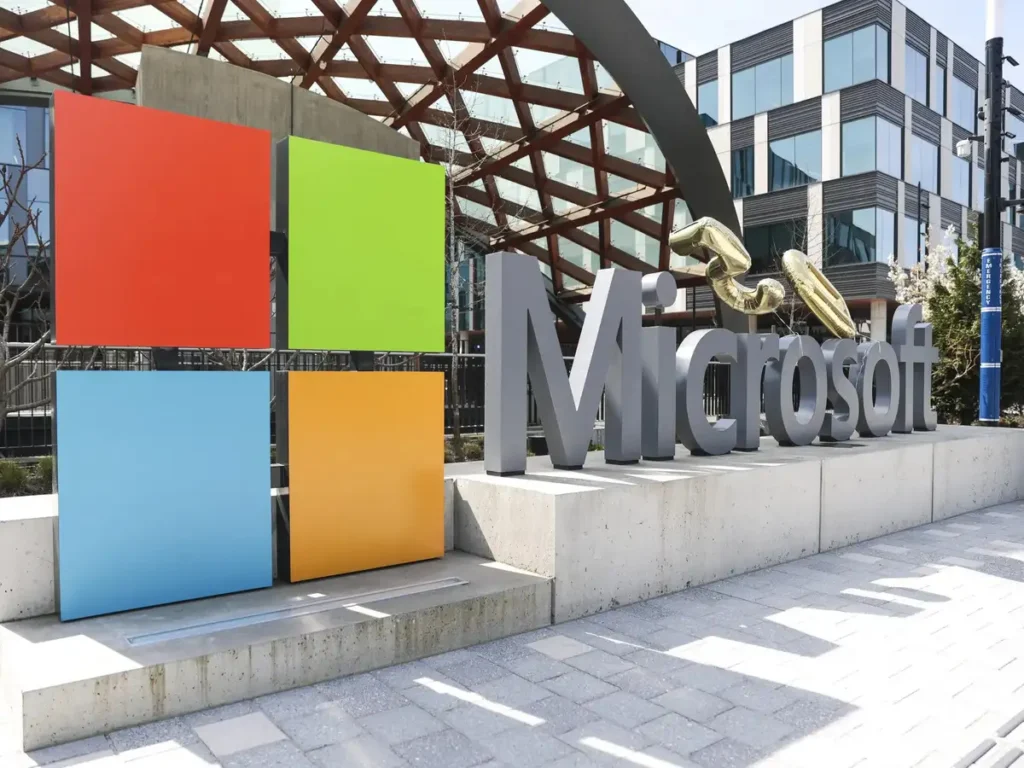Microsoft Joins the $4 Trillion Club: How AI Power and Strategic Moves Took It to the Top
In a historic moment for the tech world, Microsoft has officially joined the exclusive $4 trillion club, becoming the second company to reach such a market valuation milestone. This impressive leap reflects not only the strength of the company’s core business but also its aggressive bets on artificial intelligence (AI), cloud computing, and enterprise software.

Let’s look at how Microsoft, under Satya Nadella’s leadership, transformed itself from a traditional software giant to a cutting-edge AI powerhouse – and what it means for the future of the tech industry.
A Historic Rise in Valuation
On Thursday, Microsoft’s stock price rose nearly 4.5%, bringing its intraday market capitalization to $4.01 trillion. This happened just after the company announced blockbuster quarterly earnings on Wednesday night, which impressed both analysts and investors.
Microsoft’s stock price has already risen 28% in 2025, and it’s not slowing down. This new milestone comes just 18 months after Microsoft crossed the $3 trillion mark, showing the strong momentum behind the company’s performance. For reference, Microsoft achieved its first trillion-dollar valuation in April 2019, making this trajectory nothing short of a spectacular achievement.
The AI Revolution: Microsoft’s Winning Strategy
Fundamental to Microsoft’s rise is its bold investments in AI technologies, particularly its partnership with OpenAI, the maker of ChatGPT. Microsoft is integrating OpenAI’s models directly into its product lines—notably Microsoft 365 (Word, Excel, Teams) and in the Azure cloud via its AI assistant Copilot.
This partnership has proven to be a game-changer. In fact, Microsoft has revealed that it expects to make a record $30 billion in capital expenditures in the current fiscal quarter, primarily aimed at supporting its AI infrastructure. This includes datacenters, GPUs, and advanced cloud systems that enable the deployment of AI services at scale.
The results are already visible. Azure cloud revenues are growing rapidly, Copilot is accelerating the development of enterprise software, and Microsoft is now a leader in the generative AI space—leaving traditional rivals like Amazon Web Services (AWS) and Google Cloud far behind.
Azure Becomes the Crown Jewel
Previously known for Windows and Office, today Microsoft’s real revenue stream is its cloud computing arm, Azure. Thanks to AI integration and enterprise-level adoption, Azure has become the largest source of revenue for the company.
Microsoft is leveraging AI to provide intelligent cloud solutions for businesses, which not only increase customer retention but also boost margins. From predictive analytics to natural language processing, Azure’s smart tools are becoming integral to companies that want to make their operations future-ready.
By combining OpenAI’s models with Microsoft’s vast cloud infrastructure, the company has created an ecosystem where businesses can easily deploy, customize, and scale AI models.
AI is Even Changing How Microsoft Works Internally
Interestingly, Microsoft is not just building AI for others — it’s using it internally to change how it operates. CEO Satya Nadella revealed earlier this year that 20% to 30% of Microsoft’s code is now written by AI tools. That’s a massive productivity gain.
With increased AI productivity, Microsoft has also undergone workforce restructuring. It announced layoffs of around 9,000 employees this July — its largest since 2023 — following a previous cut of 6,000 workers in May. While tough, these decisions align with the tech industry trend of automating routine tasks and reallocating human resources to high-value roles.
A spokesperson clarified that the changes reflect the evolving tech landscape, where AI tools make some roles redundant but also open new avenues for innovation and growth.
Microsoft vs. the Titans: How It Compares to Nvidia and Apple
Microsoft isn’t the only company enjoying AI-driven growth. Chipmaker Nvidia was the first to hit the $4 trillion mark just weeks earlier, thanks to its dominance in AI chip production.
But Microsoft’s rise is different. Where Nvidia supplies the hardware for AI, Microsoft owns the software layer and user-facing applications. It’s embedding AI into everyday productivity tools that businesses use globally, giving it a much more direct route to revenue generation.
Meanwhile, Apple, once the world’s most valuable company, lags behind at a $3.12 trillion valuation. Despite its massive iPhone base and recent AI announcements, Apple is playing catch-up in this AI race. Microsoft’s early investments and strategic positioning are clearly paying off.
The Trump Tariff Effect: Microsoft Emerges Stronger
It’s important to note that Microsoft’s rise comes despite geopolitical headwinds, particularly the ongoing trade tensions under President Donald Trump’s administration. Recently announced tariffs on various imports — including tech hardware — have spooked global markets.
However, Microsoft has managed to weather the storm. In fact, its stock has rebounded nearly 50% from its April 2025 lows when Trump’s tariff threats shook investor confidence.
The company’s strong fundamentals, robust cloud demand, and future-facing AI vision helped it power through uncertainty — a testament to its operational resilience and investor trust.
A Broader Market Boost: Tech and Trade Momentum
Microsoft’s rise is also part of a broader market trend. Investor enthusiasm is returning as US trade talks progress. Driven by expectations of tariff easing and supply chains stabilizing, the S&P 500 and Nasdaq are hitting new record highs.
Tech companies, especially those with strong AI achievements like Microsoft, are benefiting most from this new confidence. The market is seeing AI not as a hype, but as the next industrial revolution, and Microsoft is playing a leading role in this direction.
What This Means for the Future
With Microsoft at $4 trillion and still climbing, it’s clear that AI is more than a buzzword — it’s the engine of modern business. Microsoft’s strategic foresight, smart partnerships, and bold investments have positioned it as the dominant force in both enterprise software and cloud computing.
But the journey isn’t over. The company will need to navigate evolving regulations, increased competition, and further AI integration without alienating workers or users. Still, with its track record, Microsoft looks more than capable of shaping the next decade of digital transformation.
A New Era for Microsoft and Tech
Microsoft’s entry into the $4 trillion club is more than a financial headline — it’s a milestone for the tech industry. It reflects a company that has successfully reinvented itself multiple times, from software leader to cloud pioneer to AI powerhouse.
Follow us for more news at Valleynewz.com

